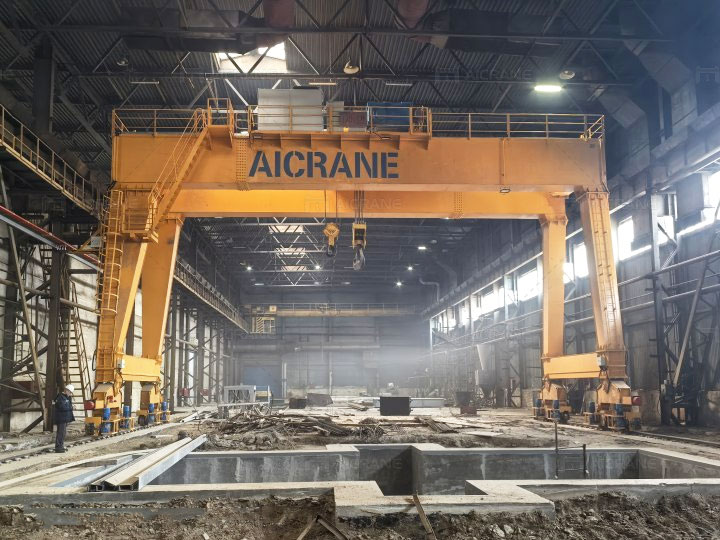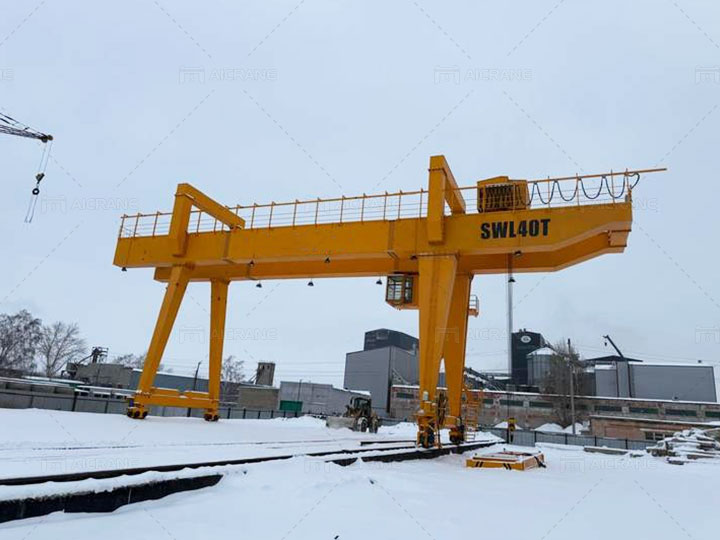When it comes to purchasing gantry cranes, one of the most frequently asked questions by potential buyers is why prices for seemingly similar products vary so much across different suppliers. Whether you’re looking for a small, light-duty crane or a heavy-duty, customized solution, the range of prices can be astonishing. So, why are gantry crane prices so different across suppliers, and what factors influence the price variations? In this article, we will explore the key factors that contribute to the differences in gantry crane pricing, helping you make an informed decision when purchasing this essential piece of equipment.

1. Crane Type and Configuration
The first and most obvious factor influencing the gantry crane price is the type of crane and its configuration. Gantry cranes come in various designs, each tailored for specific applications and lifting capacities. Some common types include:
-
Single Girder Gantry Cranes: These are the simplest and most cost-effective option, generally used for lighter lifting applications.
-
Double Girder Gantry Cranes: These cranes offer higher lifting capacities and more stability, making them suitable for heavy-duty applications. They are typically more expensive than single girder cranes due to their more complex design and higher load-bearing capacity.
-
Rubber Tyred Gantry (RTG) Cranes: These mobile cranes, commonly used in container terminals and ports, tend to be on the pricier side because they offer mobility, require specialized tires, and include complex steering systems.
-
Rail-Mounted Gantry (RMG) Cranes: These cranes, often used in container yards and heavy industry, are usually higher priced due to their fixed rail system and specialized lifting mechanisms.
Each type of crane serves a different purpose and requires varying levels of engineering and materials, leading to price discrepancies among suppliers.

2. Lifting Capacity
The lifting capacity of a gantry crane is one of the most important factors influencing its price. The higher the lifting capacity, the more expensive the crane is likely to be. Cranes designed to handle lighter loads (e.g., 10 ton gantry cranes) are generally less expensive than those designed for heavier lifting capacities (e.g., 50 ton gantry cranes or more). This is due to several factors, including:
-
Structural Requirements: Cranes with higher lifting capacities require stronger, more robust materials and thicker components to ensure the crane can handle the increased weight.
-
Motor and Power Systems: Higher capacity cranes require more powerful motors and hydraulic systems, which add to the overall cost.
-
Safety Features: Heavy-duty cranes often come equipped with more advanced safety features such as anti-sway systems, overload protection, and more sophisticated control systems, all of which contribute to their higher price.
As lifting capacity increases, so do the costs for materials, manufacturing complexity, and maintenance, all of which result in higher pricing across suppliers.
3. Customization and Special Features
Many gantry crane buyers require custom features to meet specific operational needs. This includes alterations to the crane’s size, lifting height, span, and even the addition of specialized functions like anti-sway systems, load monitoring systems, and remote control operation. Customization is a major cost driver, as it involves additional design work, engineering, and potentially longer manufacturing times.
-
Control Systems: Some gantry crane suppliers offer advanced control systems that allow for precise control of the crane’s movements, especially important in industries like manufacturing or construction where load handling must be exact.
-
Safety Features: Certain safety features such as automatic anti-collision systems, load weight sensors, and enhanced stability systems may be included or added as custom options. These systems can drive up the price significantly.
-
Surface Treatments: Some customers require specific finishes such as corrosion-resistant coatings for outdoor or marine applications, which add to the cost.
Suppliers who offer more customizable solutions, or those who specialize in creating bespoke cranes for unique environments, tend to have higher prices due to the additional design, engineering, and labor required.
4. Quality of Materials and Manufacturing Standards
The quality of the materials used in the construction of the crane plays a significant role in the final price. Premium-quality materials, such as high-strength steel or corrosion-resistant alloys, often come at a higher price point but provide greater durability, safety, and longevity.
Additionally, the manufacturing standards followed by a supplier can impact the price. Cranes built to international or European standards (like FEM, DIN, or ISO) are typically more expensive due to the rigorous design and testing procedures required to meet these high standards.
-
Material Quality: Higher-grade steel or specialty materials add to the cost, but they offer longer lifespans and improved performance.
-
Manufacturing Process: Suppliers who invest in advanced manufacturing technologies such as robotic welding, CNC machining, and precision assembly often produce higher-quality products but at a higher cost.
Crane buyers who prioritize long-term durability and reliability may be willing to pay more for cranes built with superior materials and to higher manufacturing standards.
5. Brand Reputation and Supplier Experience
The reputation and experience of the supplier can significantly affect the price of a gantry crane. Well-established crane manufacturers with a proven track record of producing high-quality, reliable equipment often command higher prices than newer or less experienced suppliers. Some factors that contribute to a supplier’s pricing include:
-
Research and Development (R&D): Suppliers with extensive R&D resources can create innovative crane solutions, which can result in higher prices for their products.
-
Customer Service and Support: Experienced suppliers tend to offer superior after-sales service, including installation, maintenance, and training. The costs associated with these services are often reflected in the overall price of the crane.
-
Warranty and Service Packages: Well-established brands tend to offer better warranties and more comprehensive service packages, which increase the value of the crane but also contribute to a higher upfront cost.
Buyers may be willing to pay a premium for a reputable brand that offers reliable performance, top-notch customer support, and long-term value.
6. Location and Shipping Costs
The geographic location of the supplier and the customer plays an important role in determining the overall cost of a gantry crane. Shipping costs for large, heavy equipment can vary significantly based on the distance between the supplier’s manufacturing facility and the buyer’s location.
-
Local Suppliers: Purchasing a crane from a local supplier may reduce shipping and handling costs, making it a more economical option.
-
International Shipping: When buying from overseas suppliers, additional costs like import taxes, tariffs, and shipping fees must be taken into account, which can increase the overall price.
Suppliers that are geographically closer to the buyer can offer more competitive pricing due to lower transportation costs, while international suppliers may charge higher prices to account for the added expenses associated with shipping.
7. Market Conditions and Economic Factors
Finally, general market conditions and economic factors also contribute to differences in gantry crane prices. Fluctuations in raw material costs, exchange rates, and labor costs can affect the price of cranes. For instance, during periods of high demand or supply chain disruptions, crane prices may increase due to shortages of materials or delays in manufacturing.
Additionally, inflation and economic stability in the supplier’s home country can affect pricing. In some cases, suppliers may pass on these increased costs to customers.
Conclusion
In summary, the reasons why gantry crane prices vary across suppliers are numerous and multifaceted. Factors such as crane type, lifting capacity, customization, material quality, brand reputation, geographic location, and market conditions all play crucial roles in determining the price of a crane. Buyers should take the time to carefully evaluate their specific needs, consider the quality and reputation of the supplier, and weigh the potential long-term costs of ownership when making a purchase.
Ultimately, the key to finding the best value lies in balancing price with quality, service, and long-term durability. By understanding the factors that contribute to price differences, you can make an informed decision that meets both your budget and operational requirements.